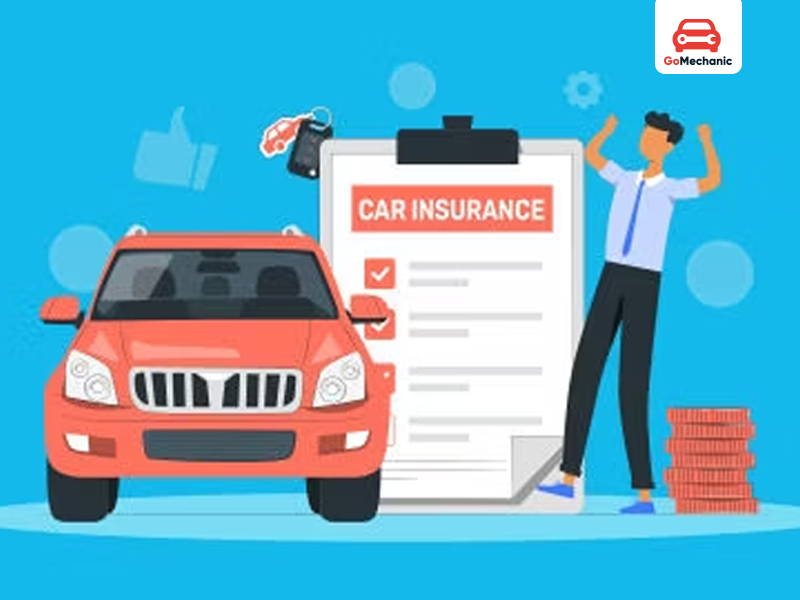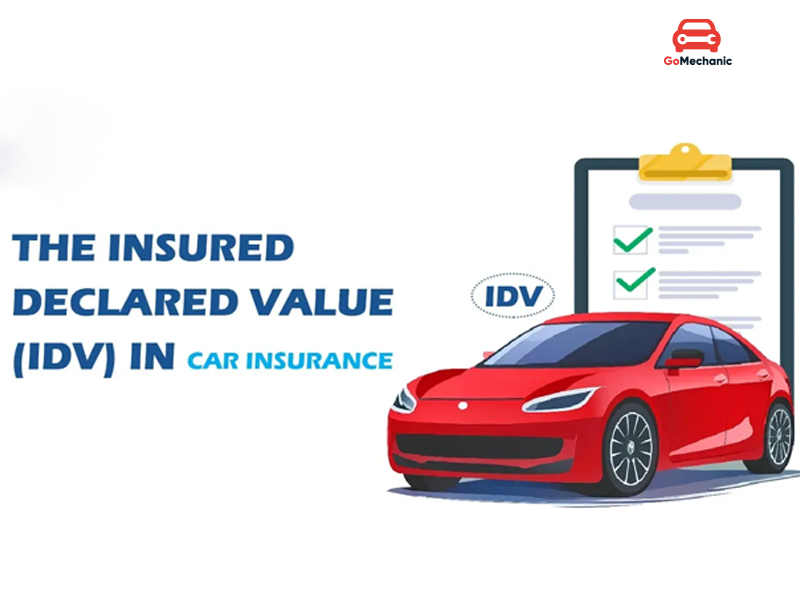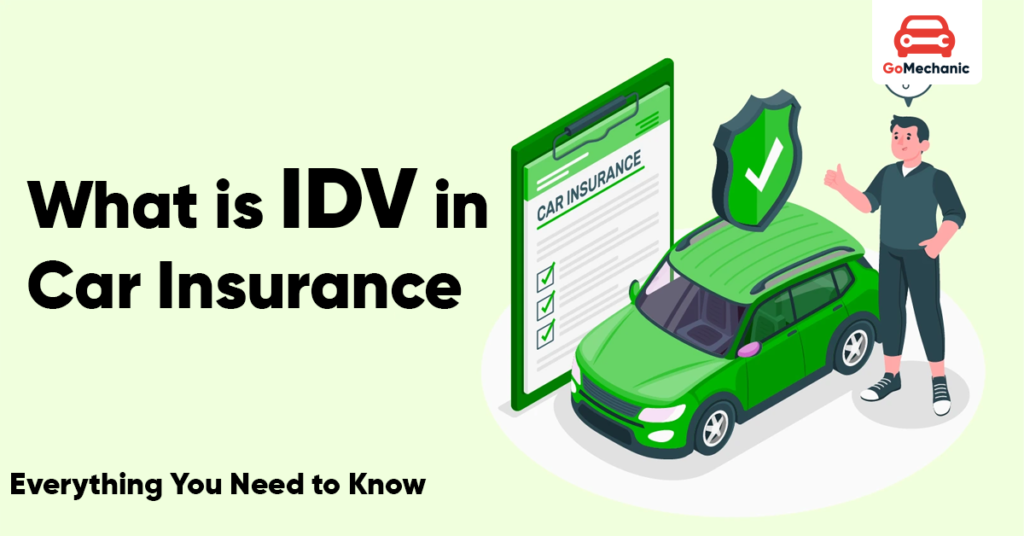When purchasing car insurance, the term IDV, or Insured Declared Value, crops up more often. This question definitely arises when claiming car insurance: what is IDV in car insurance? A car owner should know what IDV means, how it is calculated, and what its relevance is, what is IDV value for car insurance. This detailed guide will take you through everything about IDV in car insurance, its importance, how it is calculated, and its effect on premiums and claims.
What is IDV in car insurance?
IDV, or insured declared value, is a term used to describe an amount that will be paid in the event of total loss (due to theft or total damage). In simpler terms, it can be referred to as the current market value of the car at the time of taking the insurance after accounting for depreciation. An IDV is calculated on the ex-showroom price of the vehicle with the cost of accessories or modifications when purchasing a motor insurance policy. Its IDV drops along with the continuous depreciation of the car through the years.
IDV acts as a safety net so that you won’t be straddled with financial agony in case it completely damages your car or theft. The value of IDV is what the insurer pays you if your car is declared a total loss, helping you recover its monetary value.
Factors Affecting IDV in Car Insurance
There are various factors that can affect the IDV of the vehicle:
- Type of Car: Heavier vehicles have a greater IDV, such as high-end sedans and SUVs, due to their values and features, along with performance. Lighter automobile types like hatchbacks could have a smaller IDV because of their economic pricing relative to others and early depreciation.
- Car Aging: The value of a car depreciates as it ages, lowering the IDV. Newer cars will have a higher IDV than older cars because of wear and tear, as well as older features. Older cars will have a lower IDV, meaning lower premiums but also lower payouts in the event of theft or damage.
- Car Make and Model: The model and brand of a vehicle affect its IDV. High-end and luxury vehicles such as Audi or BMW tend to have a high IDV owing to higher value retention and state-of-the-art features. Economy vehicles usually have low IDVs because they depreciate quickly and have low market value.
- Area of Registration: The IDV of the car can also depend on the registration city or area of the car. Cars registered in high-demanding metro cities can have higher IDVs because of the increased market price. On the contrary, cars registered in low-density areas can have lower IDVs because of decreased market prices.
- Accessories: Add extravagant sound systems or leather seats to raise a person’s IDV of the vehicle. However, just as a vehicle, accessories also depreciate, thereby reducing the value granted to them. That is, even though these accessories will actually add to the IDV initially, they would depreciate over time with the age of the car.
These factors include car age, make, model, type, registration zone, accessories, etc.; all these parameters affect the IDV of a car, which in turn cause differences in premiums and payouts in cases of claim.
Also Read: 10 Most Asked Car Insurance Questions by Car Owners
What is IDV value for Car Insurance and calculation?
There are two simple methods to calculate your vehicle’s IDV depending on whether accessories have been added or not. Here is the breakdown:

Basic Formula (Without Accessories):
- IDV = ex-showroom price of the car – depreciation
- IDV = ex-showroom price of the car – depreciation
- Depreciation is calculated based on the age of the vehicle, which was discussed earlier in the depreciation schedule.
Formula (With Accessories):
- IDV = (ex-showroom price of the car – depreciation) + (cost of accessories – depreciation of accessories)
- This considers any accessories or modifications such as custom rims or interior fittings for your car, which depreciate over time.
- Calculating the IDV gives you an estimate of the current market price of your car, which can help you ascertain whether the insurance premium that you pay and the claim payout lined in is equivalent to the actually assessed worth of your vehicle.
Depreciation Schedule to Calculate the IDV of a Car
Depreciation annually reduces the market value of a vehicle. The world follows depreciation, and here is a schedule according to which percentages of depreciation based on the age of the car will be as follows:
| Age of the Car | Depreciation (%) |
| 6 months and below | 5% |
| Between 6 months and 1 year | 15% |
| Between 1 to 2 years | 20% |
| Between 2 to 3 years | 30% |
| Between 3 to 4 years | 40% |
| Between 4 to 5 years | 50% |
This depreciation schedule assists the insurer in ascertaining the value of the car. For example, a two-year-old car will have a depreciation rate of 20 percent, meaning it is worth 80 percent of the original ex-showroom price. The car depreciation is charged every year and will keep depreciating for five years, after which IDV is to be mutually agreed upon by the insurer and the policyholder.
When Will I Be Paid the Full Insured Declared Value of My Car?
You will receive full IDV compensation in these instances:
- Theft: The insurance company would make an IDV payment on the subject of a stolen car. Wherein, if the car were to be announced not recovered after the stealing is done, the insured would be paid the full IDV, the value of the car during the stealing event.
- Total Loss: If the car is involved in an accident or damaged beyond repair, the insurance company will compensate you based on the IDV, less any applicable depreciation. This is typically the case when repairs are too costly to make, and the damage is considered beyond repair.
Choose the Right IDV for Your Car
The right IDV is very necessary for optimal coverage. Here are the key considerations:
- Don’t Underestimate IDV: Underestimating IDV in an attempt to cut down on the premium takes a toll on the payout when the car is stolen or damaged; always ensure that the car is insured at its accurate market value to avoid underinsurance.
- Don’t Overstate IDV: If IDV is overvalued, this not only increases the premium but also places doubt on whether the insurance will even consider any IDV amount more than the actual market value of the vehicle.
- Make Sure to Re-evaluate Current Market Value Periodically: Your vehicle may undergo changes in value according to certain parameters, varying from wear and tear, to mileage, to prevailing market trends.
- Know About the Influence of Depreciation: Depreciation has a major role in the valuation of the IDV of your vehicle. The older the car, the less its value, leading to depreciation in your IDV value. Give attention to the annual depreciation and what that means for your claim payout.
- Proper Documentation of Add-Ons: If you’ve added accessories or upgraded any component of your vehicle, ensure you get them listed and documented properly in your insurance policy.
- Be aware of Over/Under Insurance Risk: Setting the IDV too high can make you pay a premium that is not the actual value of your vehicle, and setting it too low can make you underinsured. Be careful while selecting an IDV that does not mirror the actuality of your car’s value.
To choose the right IDV calculate the present market value of your vehicle, taking any customization into account. At the end of this process, your IDV should truly reflect the vehicle’s worth, from the point of view of cover and premium.
Importance of IDV in Car Insurance

There are several reasons why IDV is considered important in a car insurance policy:
- Compensation in Case of Loss: IDV is the maximum amount that your insurance company would pay you in case your car is stolen or damaged beyond repairs. Therefore, it becomes imperative that your car has been insured for an accurate IDV so that you receive just compensation. Anything less than adequate IDV would mean that you would have to pay the difference toward replacement cost of the vehicle yourself.
- Influence on Premium: The higher the IDV of your car, the higher the premium you pay. Since the greater the value, the more risk the insurer assumes, a lower car IDV means you pay lesser premiums, but it potentially translates into a lower payout during claim-time. This basically leaves you to sort out the trade-off between being fully covered and paying affordable premiums.
- Replacement Value: When your car gets damaged beyond repair, the IDV will decide how much your car would be compensated to replace the vehicle. Therefore, a too-low IDV would leave you underinsured, more or less on your way to pay anything for a similar vehicle.
- Customized Modifications: Customization increases the IDV to reflect the value attached to the modifications. For instance, the addition of a high-quality sound system or some custom alloy wheels can reflect a higher IDV when calculating losses due to theft or damage.
What is the effect of IDV on car insurance renewal?
For renewing your policy, the IDV is adjusted automatically according to the age of the car and depreciation. It is very important to assess that IDV every time a renewal will be done because it should now be reflecting the latest market value of the car. In cases where the depreciation of the vehicle is very significant, you may be required to adjust that IDV to avoid overcharging for the insurance. The renewal IDV may seem too low or too high but in such cases, it is possible to contact your insurer for changes before the renewal process is complete.
What Happens When You Increase/Decrease Your Car IDV?

The consequences of decreasing the IDV of a vehicle include:
- Lower Premiums: With the decreased IDV of your vehicle, the insurance premium is lower, meaning you will be paying less for the car insurance coverage.
- Lower Payout: The downside is that the claim disbursal in case you make a claim will be lower, especially in cases like theft or total loss, where it may not entirely compensate for the real value of your car.
The consequences of increasing the IDV of a vehicle include;
- Higher Premiums: An increase in the IDV value of your car, of course, increases your premium. The higher the IDV, the higher the premium because the insurer is liable to give a higher value in the event of a claim.
- Higher Payout: On the brighter side, in case of theft or damage beyond repairs, you will be entitled to a higher payout, which will make your replacement easier.
This is related: “Pay As You Drive” Insurance Policy | New Type of Car Insurance In India
When should you have a low IDV for your insured car?
Having a lower IDV is ideal for:
- Old Cars: For old cars with very little market value, a lower IDV would save on premium.
- Low Coverage: If you are ok with a low claim amount in the event of a claim, then you may opt for a lower IDV and will save on premiums. Having a low IDV may help you save on the premiums, but be careful, it may cut down your compensation in case of total loss or theft.
When Should You Have a High IDV for Your Insured Car?
A higher IDV is ideal if:
- Next in the ascending order comes a consideration of some specific factors that may determine your car insurance premium. One is the age of the vehicle. Generally, newer cars tend to fetch a greater value in the market, and thus proper IDV must be insured, as this will help in claiming the amount at the time of total loss.
- Custom Accessories: If you have done considerable customization or if you have added a few luxurious accessories, the IDV must include their value so that they are covered in case of loss or damage.
A higher IDV may result in a higher premium, but this means that you are paying adequate protection for the legitimate full value of your car.
Pros and Cons of Low IDV (Lower IDV)
Pros:
- Lower Premiums: A lower IDV naturally means a lower premium, resulting in affordability.
- Cost of Old Car: It applies to older cars, whose value in the market has also depreciated.
- Comfort for the Buyer: The lower premium would ease the financial burden in a situation where one doesn’t clearly mind a smaller payout.
Cons:
- Lower Claim Amount: The lower IDV amount means a lesser payout for theft or total loss, probably resulting in being underinsured.
- Exclusions on Customizations: Custom parts or accessories may not qualify for any claim if the IDV is too low.
- Underinsurance Risk: The true worth of the car might be left uncovered, leading to less-than-adequate compensation.
Pros and Cons of High IDV (Higher IDV)
Pros:
- Higher Payout: The more the IDV, the more compensation in theft or total loss
- Better Coverage for Customizations: A greater IDV would offer better coverage of accessories and modifications
- Depreciation Protection: A higher IDV guarantees value protection as a car gets older.
Cons:
- Higher Premiums: The higher the IDV, the higher the premium, and thus, the heavier on the pocket.
- Paying Excess for Older Cars: For older vehicles, a higher IDV may not be justified, and hence an unnecessarily high premium.
- Discrepancy in Claims: In the event that the IDV exceeds the market value, the insurer may be left confused while announcing the final claim settlement.
Debunking the Myths about IDV in Car Insurance
Among those fallacies related to IDV are
- Lowering IDV Significantly Decreases Premium: Reducing IDV decreases premium rate, but every reduction in payout also decreases. In most cases, the premium reduction wouldn’t be worth the risk of receiving a lesser payout during a claim.
- IDV is always decided by the Insurer: The IDV is always for his own, in the beginning determined by the insurer. The final IDV, however, is usually between the insurer and the policyholder agreeable, especially for cars older than five years.
- Higher the IDV, Guaranteed Payout: Higher IDV does not guarantee the same amount in case of a claim. Factors like depreciation and policy terms also influence the payout amount.
Conclusion
It is important for every car owner to understand IDV in car insurance. It tells how much value an insured car will have in case of total loss or theft and also contributes to determining the premium to be paid by the insured owner, ensuring a fair payout at the time of a claim. Be it a new policy, a renewal, an increase of the IDV, or a decrease, the right choice of amount according to the market value of the car, its age, and accessories attached is critical.
Insure your vehicle at the right IDV to further your own financial interests and provide you with peace of mind when on the road. And always employ an IDV calculator to guide you in making informed decisions about your car insurance purchase or renewal.

